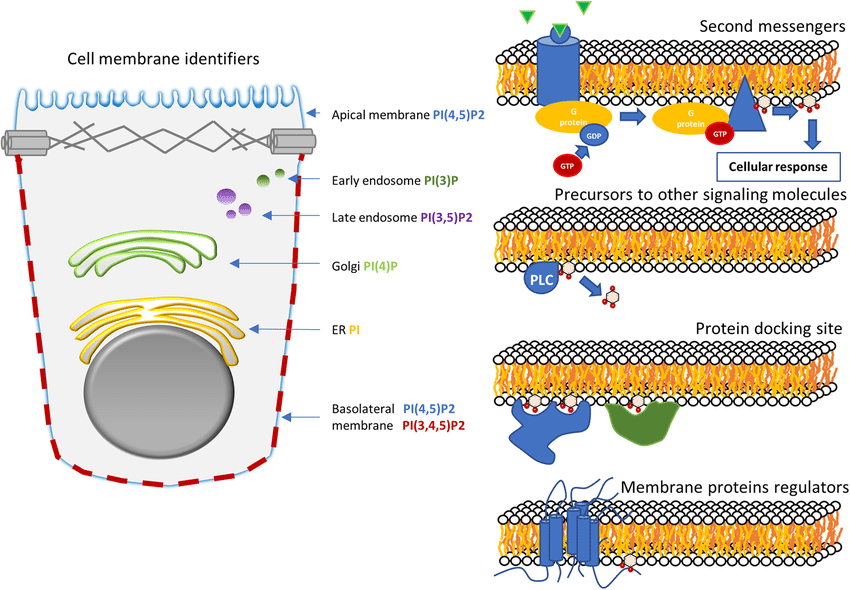Introduction
Phosphoinositides (PIs) are a family of signaling molecules found in cells. They are based on a common building block, phosphatidylinositol (PI), a molecule embedded in the cell membrane. PIs play a critical role in regulating various cellular processes.
Different Structures, Different Functions
PIs are formed by attaching phosphate groups to specific locations on the PI molecule. This simple modification results in seven distinct PI variants. Each variant has unique properties, and the position of the phosphate group determines how a PI interacts with other molecules within the cell.
Tightly Controlled Levels
The amount and location of specific PIs within a cell are carefully regulated by enzymes. Kinases are enzymes that add phosphate groups to PIs, while phosphatases remove them. This constant activity ensures precise control over PI levels and creates specific PI distributions within different parts of the cell.
A Signaling Example: PIP₃
One example of a PI is phosphatidylinositol 3,4,5-trisphosphate (PIP₃). This molecule is generated from another PI variant (PI(4,5)P₂) by an enzyme called PI3K. PIP₃ acts as a cellular messenger. It binds to specific proteins and triggers signaling cascades that influence cell growth, survival, and proliferation.
More Than Signaling: Shaping the Cell
In addition to their role as messengers, PIs also directly influence the organization of the cell membrane. PIs interact with the fatty acid tails of other membrane lipids, affecting the membrane's curvature and fluidity. This, in turn, affects how proteins are positioned within the membrane, impacting processes like endocytosis, exocytosis, and communication between different parts of the cell.
Scientists studying how cellular signaling pathways influence gene expression frequently rely on reporter gene assays. One popular tool is the TFEB promoter-luciferase reporter plasmid from Gentaur. This plasmid incorporates the regulatory region under investigation (such as the TFEB promoter) linked to the luciferase gene. When the promoter is active, it drives the production of luciferase, an enzyme that emits light in the presence of its substrate.
Interestingly, luciferase activity can be influenced by cellular inositol levels. By monitoring luciferase output in cells treated with different inositol concentrations or manipulated signaling pathways, researchers can gain valuable insights into how inositol signaling affects TFEB promoter activity and potentially TFEB-mediated gene expression. This approach offers a powerful tool to decipher the complex interplay between inositol signaling and transcriptional regulation.
Conclusion
Phosphoinositides are essential for coordinating various cellular activities. Their diverse structures, dynamic regulation, and interaction with proteins allow them to orchestrate a complex signaling network that governs many cellular processes. Further research into PIs may reveal new details about this intricate signaling system and potentially lead to new therapeutic approaches for diseases linked to imbalances in PI signaling.
To gain a deeper understanding, you can watch the video below.



